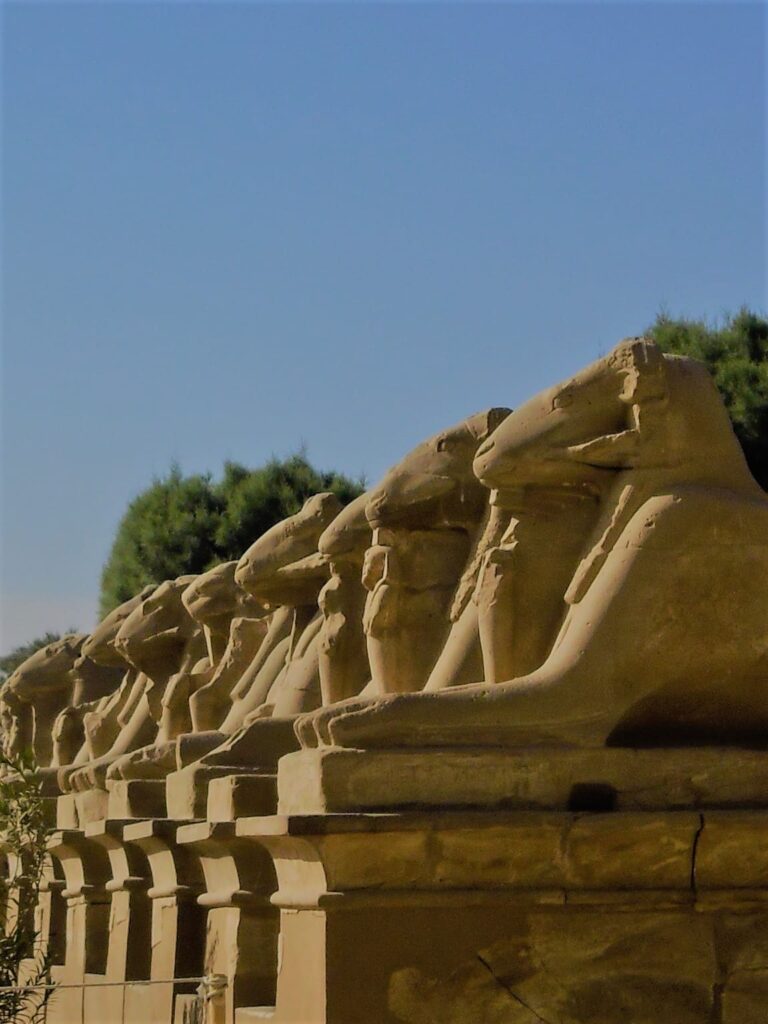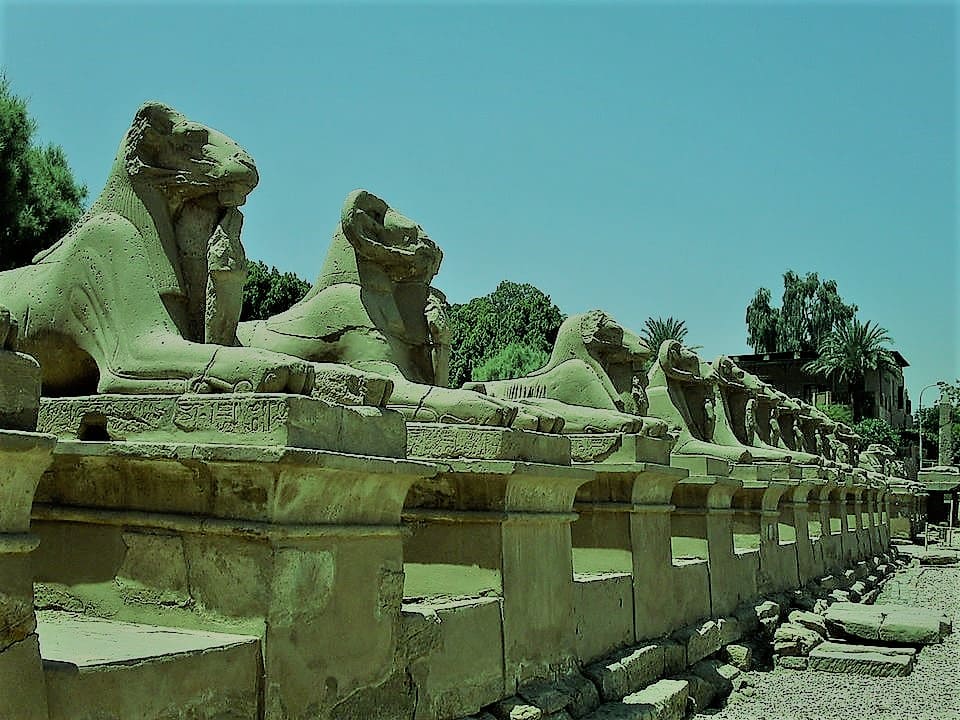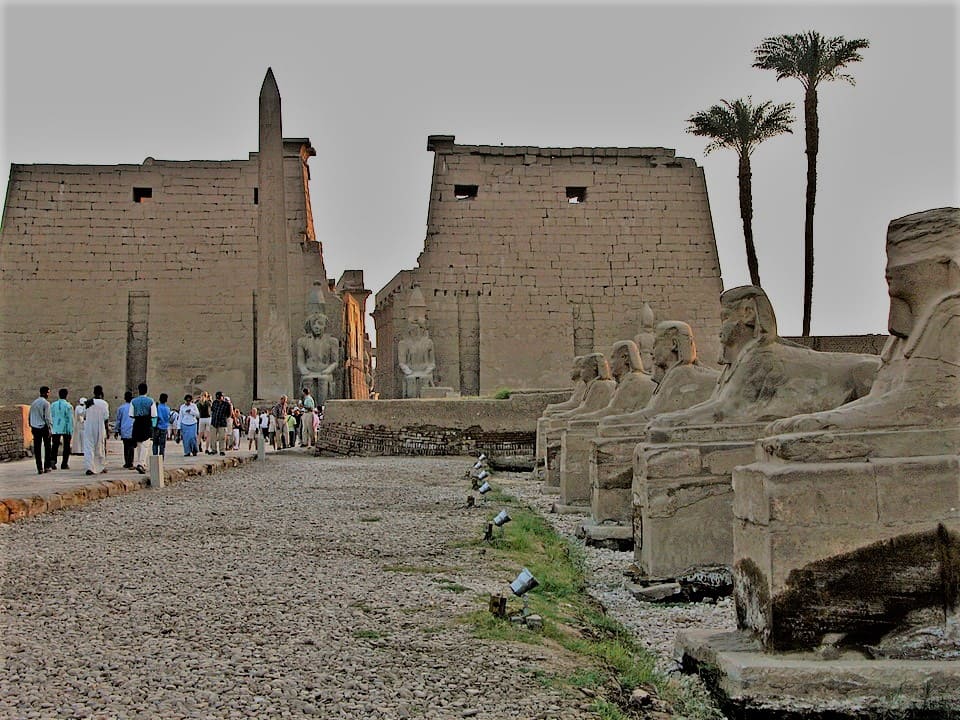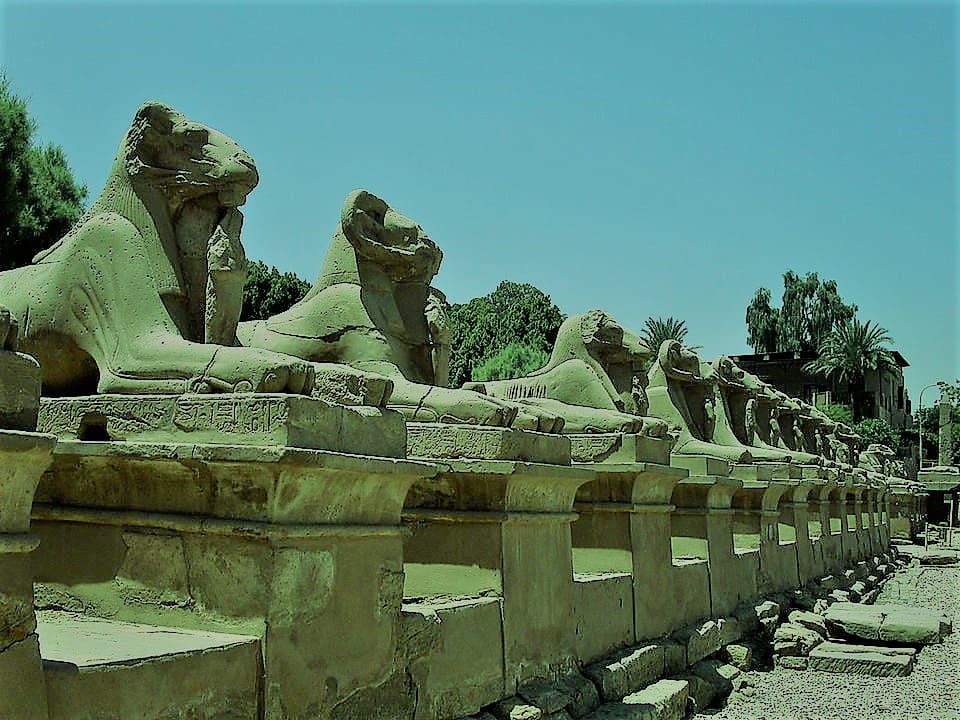
About
The King’s Festival Road, also known as Ram Road (Arabic: طريق الكباش), is a 2.7 km long avenue (dromos) that connects Karnak Temple to Luxor Temple after being built in the ancient city Thebes (present-day Luxor), with sphinxes and ram-headed statues lining either side.
History
Construction of the Avenue of Sphinxes began during the New Kingdom era and was completed in the late period during the reign of the 30th Dynasty ruler Nectanebo I (380–362 BC), the road was subsequently buried under layers of sand bury the centuries. In Description de l’Égypte (1809), the Avenue of the Sphinxes is described as 2,000 meters long, lined with more than 600 sphinxes. Georges Daressy reported in 1893 that the road at Luxor is buried and could not be excavated because it was below the water table, while at Karnak it is visible for nearly a kilometer. The first trace of the avenue (at Luxor) was found in 1949[5] when Egyptian archaeologist Mohammed Zakaria Ghoneim discovered eight of
statues near Luxor Temple, with 17 more statues discovered between 1958 and 1961 and 55 between 1961 and 1964 have been excavated, all within a radius of 250 meters.
From 1984 to 2000, the full route of the walkway was finally determined, requiring excavators to clear the path. The original statues, dating from 1057, are found along the way and are divided into three forms: The first form is that of a ram-headed lion, which was placed during the reign of Karnak in a range of about 1,000 feet between the Karnak Temple and the enclosure of Courage was erected by the ruler of the New Kingdom Tutankhamun. The second form is a full ram statue erected in a remote area during the Eighteenth Dynasty by Amenhotep III before later being moved to the Karnak complex. The third form, which includes most of the statues, is a statue of the Sphinx (body of a lion and head of a human), the statues stretch a mile to Luxor Temple.
You Can View Our Luxor Tours NowGrand reopening after renovation
On November 25, 2021, the avenue opened to the public following the completion of restoration work that took more than seven decades. The march included participants in pharaonic attire, a symphony orchestra, light effects, professional dancers, boats on the Nile, horse-drawn carriages. Three models of golden pharaonic-style boats dedicated to the ancient sun god Amun Ra, god of the moon Khonsu, and the mother goddess Mut were carried by men dressed in diaphanous gold and black robes, replicas of what was meant for the same festival would have been worn in ancient Egypt. The vision for this event came from a team from the German University in Cairo. Egyptian President Abdel Fattah el-Sisi visited the city
show, At that time, the avenue was lined with a total of 1,057 statues, including 807 in the shape of a sphinx and another 250 with a ram’s head, Zahi Hawass called the site at Luxor «the largest open-air museum, the largest archaeological site in the world, covering the history of Egypt from the 2000 BC era to the present day.» known as the 11th Dynasty, narrated up to Roman times».
-
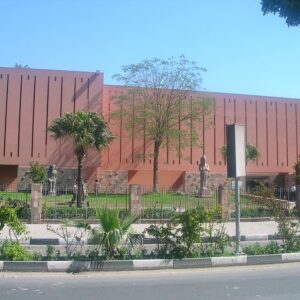 Visita guiada al Museo de Luxor y al Museo de la Momificación0.00 € – 47.00 €
Visita guiada al Museo de Luxor y al Museo de la Momificación0.00 € – 47.00 € -
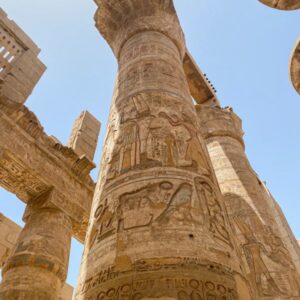 Templo de Karnak y Luxor en una visita guiada0.00 € – 55.00 €
Templo de Karnak y Luxor en una visita guiada0.00 € – 55.00 € -
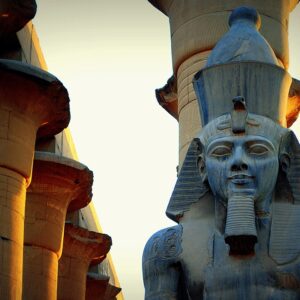 Tour guiado por el valle oriental y occidental del Nilo0.00 € – 100.00 €
Tour guiado por el valle oriental y occidental del Nilo0.00 € – 100.00 €

